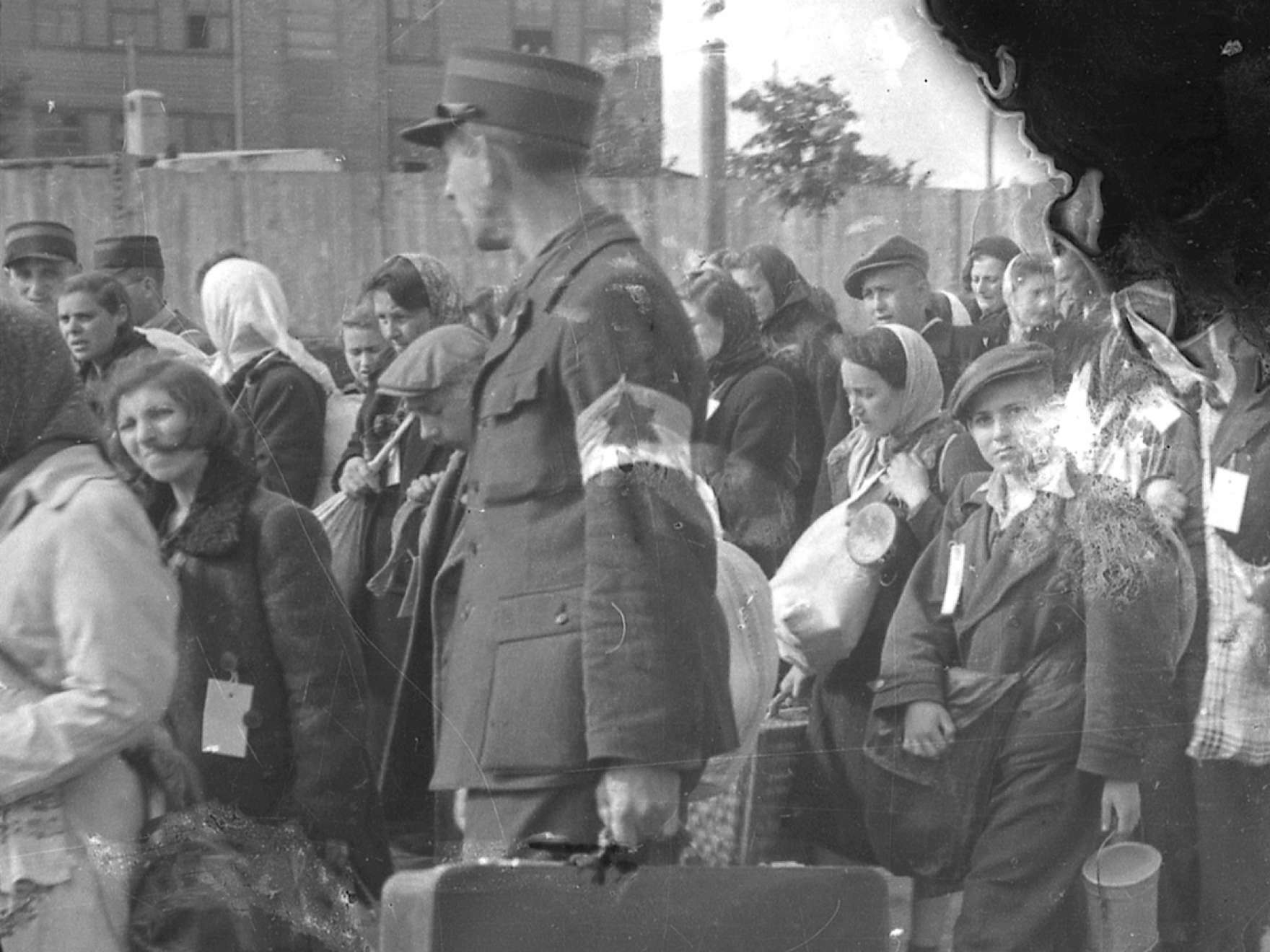A visit to the MFA with Touro Synagogue
Sunday, July 30, 2017
by Aaron Ginsburg aaron.ginsburg@gmail.com
BLOG FACEBOOK
 On Sunday, 35 members and friends of Touro Synagogue took a trip to the Museum of Fine Arts in Boston. It was the last day for the exhibit of photographs by Henryk Ross, taken in the Lodz Ghetto. It was also a chance to check on the Touro rimonim, and see a few other things at the museum. I took a one-hour tour led by a docent to see the art of Europe. The tour was excellent. Some people have favorite words. The docent’s favorite word was “beautiful” and every painting was beautiful. I suspect the elevators and the bathrooms were beautiful too.
On Sunday, 35 members and friends of Touro Synagogue took a trip to the Museum of Fine Arts in Boston. It was the last day for the exhibit of photographs by Henryk Ross, taken in the Lodz Ghetto. It was also a chance to check on the Touro rimonim, and see a few other things at the museum. I took a one-hour tour led by a docent to see the art of Europe. The tour was excellent. Some people have favorite words. The docent’s favorite word was “beautiful” and every painting was beautiful. I suspect the elevators and the bathrooms were beautiful too.
Rita Slom said, “Our trip to Boston was a delightful day for all of us. During our short bus ride David and Linda talked about their last visit and answered questions about what we might see. The first place most of us went to was the
Newport room with our rimonim. It's a breathtaking scene.
Newport room with our rimonim. It's a breathtaking scene.
“Then we went to see the Lodz exhibit. Most of us had tears in our eyes as we saw what these people suffered
“My wish was to see the Isabella Stuart Gardner Museum a ten minute walk from MFA. So I got on the Fenway and visited there. It is where the largest art theft took place.
“When we climbed onto the bus we went to Harvard Street to eat and buy whatever Jewish food you could want. Six of us had Kosher Chinese food...a real treat.
“On the way home we had treats that Jeanine had brought for us.
“Thanks to the Rabbi, Cliff Guller, David and Linda Nathanson and Jeanine.” [Philip Mintz was also involved in planning the trip]
Rabbi Marc Mandel also enjoyed the museum, the bus, Brookline, and David and Linda’s commentary.
The special exhibit was called, “Memory Unearthed, The Lodz Ghetto Photographs of Henryk Ross.” The exhibit began with a short video from an Israeli documentary featuring Henyrk Ross and his wife talking about their experiences in Lodz.
Ross was a professional photographer. He worked for the Judenrat taking photos for identity cards and propaganda, and by using the film very efficiently, was able to take a least six photographs a day of what it was really like in Lodz, at great risk to his and his wife’s lives. He buried his pictures in 1944, and retrieved them after liberation. Ross testified at the trial of Adolf Eichmann and his photos were used as evidence.
After the war Henryk Ross never took another photograph. He seemed to be a prisoner of what he witnessed and of the photographs he took. Having seen his photographs, I suspect Ross was aware of the great photographers of his era, and was among the greats himself.
Newporter Billy Spargo commented, “I had just finished reading "Yellow Star" by Jennifer Roy, niece of Sylvia Perlmutter, 1 of 12 children who survived the Lodz ghetto. It is a book of poetry she began when she was 4 1/2 yrs. old. This made the Henryk Ross exhibit all the more poignant. I walk by the Touro Synagogue every day so viewing the Rimonim was a must. Also, there was a local art exhibit, at Temple Ohabei Shalom! Toda Raba to all who made the trip possible.”
Billy Spargo’s great uncle was John Spargo(1876-1966). John Spargo, born in England, was mostly self-educated. He became a socialist, and was involved in the creation of the Labour Parliamentary Representation Committee, a forerunner of the British Labor Party. Spargo was on the right wing of Socialism, and was opposed to violence, and also to dictatorial tendencies.
He and his wife went to America in February, 1901. He joined the Socialist Labor Party, edited a socialist monthly, and eventually was a founding member of the Socialist Party of America in 1901. He was opposed to one person being in charge. He opposed extremist attempts to take over the party, and eventually broke with the party over whether America should join the Allies in WWI, which he supported.
He wrote three books in 1905 and 1906 about child labor and about underfed children and child exploitation, and supported efforts to have the government take a more active role in defense of children.
In 1908 he wrote the best biography of Karl Marx in English up to that time.
Spargo became concerned about the effect of anti-semitism
on American Democracy. He took particular aim at Henry Ford, who supported an anti-semitic newspaper. Spargo considered Ford to be a naive dupe. This led to a letter signed by 136 notables published in the New York Times, lectures, and a book, “The Jew and American Ideals,” published in 1917.
on American Democracy. He took particular aim at Henry Ford, who supported an anti-semitic newspaper. Spargo considered Ford to be a naive dupe. This led to a letter signed by 136 notables published in the New York Times, lectures, and a book, “The Jew and American Ideals,” published in 1917.
John Spargo became a Republican in the mid 1920s. But, like Henryk Ross, he then retired from politics, and became a museum director in Old Bennington, Vermont.
And on that note, I retire from Jewish Newport…until next week!


No comments:
Post a Comment